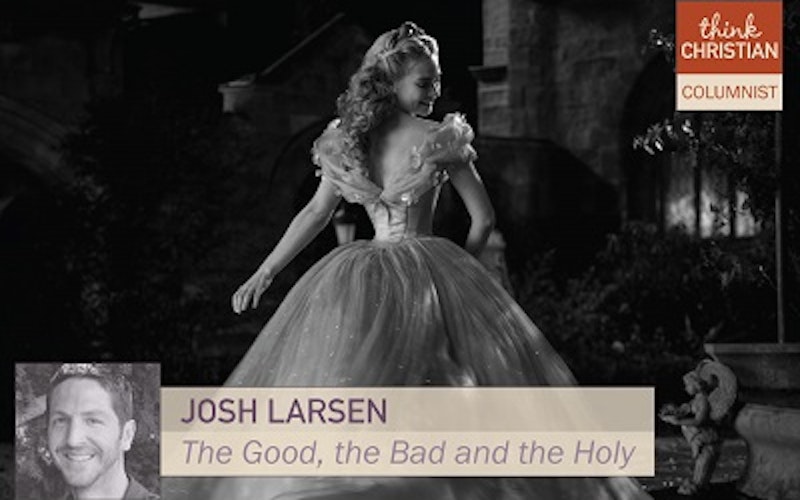
Movies
Getting back to basics with the new Cinderella
Sometimes it seems that even Disney movies have given up on moral instruction.
Take last year’s Maleficent, the studio’s revisionist version of the Sleeping Beauty tale. I loved it, but mostly for the way it evoked the psychological effects of trauma while also offering a nuanced understanding of evil. Not exactly kids’ stuff.
Meanwhile, as animated efforts become increasingly chaotic, even those with instructional instincts – such as Disney’s Big Hero 6, with its early emphasis on mercy and caregiving – inevitably give way to explosive, weaponized climaxes. Faded, it seems, are the sweetly instructive ways of something like Pinocchio, from 1940.
Don’t get me wrong. I’m not clamoring for more preachy kids’ flicks. Those of the Christian variety in particular give me hives. Yet I’m also not entirely opposed to the idea of moral instruction as a function of film, especially in movies for children. Done artfully, and with respect for the intelligence of their intended audience, movies can be helpful tools for training young minds in the way they should go.
Cinderella, Disney's live-action remake of its 1950 animated film, is a mid-century throwback in many ways, a sumptuous studio production as notable for its inventive costume design (by Sandy Powell) and grand production design (by Dante Ferretti) as anything else. The director, Kenneth Branagh, seems more interested in making sure everything is in the right place than in offering some form of postmodern deconstruction. And while some have inevitably carped that the film’s retro vision is anti-feminist, I thought Lily James, as Cinderella, managed to gently tweak what is on the surface a very traditional part. She’s a damsel in distress, to be sure, yet none the weaker for it.
Even to this Maleficent fan, the traditionalist nature of Cinderella felt refreshing.
Yet it is really Cinderella’s use of old-fashioned (albeit lightly handled) moral instruction that even this Maleficient fan found refreshing. Early on, as her health gives way, Cinderella’s mother (Hayley Atwell) tells her to always “be kind and have courage.” It’s a lesson the girl takes to heart, especially in her handling of the mistreatment that will be visited upon her by her stepsisters and stepmother (a sinister Cate Blanchett).
Some of the film’s instruction even aligns beautifully with Biblical teaching. Kindness, of course, is listed among the fruit of the Spirit, while many other qualities Paul speaks of in Galatians apply to the movie’s heroine: love, joy, peace, forbearance, goodness, faithfulness, gentleness and self-control.
Of course, such characteristics can occasionally be mistaken for weakness. And indeed, some of the critiques of Cinderella have expressed frustration that she doesn’t do enough to stick up for herself. But at this point, do we really need another warrior princess? Isn’t there room for a Disney heroine who meets her adversaries not with vengeance, but with the strength that comes through forbearance?
This is precisely what happens in the movie’s climactic scene, when Cinderella’s gentle singing (a particular form of forbearance) inadvertently alerts the prince (Richard Madden) to the fact that she’s been hidden away in her stepmother’s attic. Given the keys to the kingdom, as it were, does Cinderella seek revenge? No, she grants her stepmother a kind smile and says, “I forgive you.”
In a time when so many of our kids’ movies end on notes of physical domination, it’s refreshing to see forgiveness portrayed as a virtue instead of weakness. It seems to me – and this may be a particularly crotchety thing to say – that forgiveness is a virtue all would do well to learn.
Topics: Movies, Culture At Large, Arts & Leisure